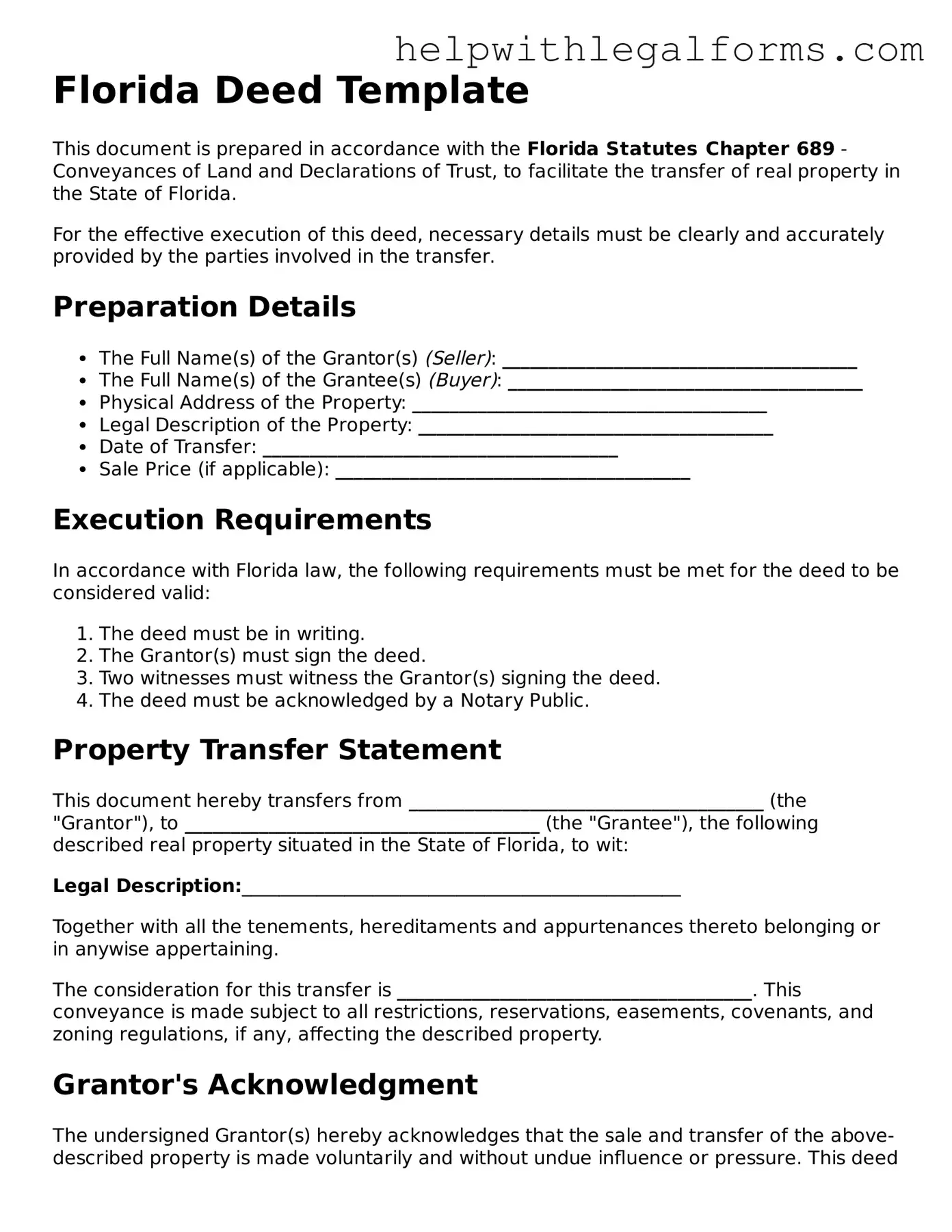Florida Deed Template
This document is prepared in accordance with the Florida Statutes Chapter 689 - Conveyances of Land and Declarations of Trust, to facilitate the transfer of real property in the State of Florida.
For the effective execution of this deed, necessary details must be clearly and accurately provided by the parties involved in the transfer.
Preparation Details
- The Full Name(s) of the Grantor(s) (Seller): ______________________________________
- The Full Name(s) of the Grantee(s) (Buyer): ______________________________________
- Physical Address of the Property: ______________________________________
- Legal Description of the Property: ______________________________________
- Date of Transfer: ______________________________________
- Sale Price (if applicable): ______________________________________
Execution Requirements
In accordance with Florida law, the following requirements must be met for the deed to be considered valid:
- The deed must be in writing.
- The Grantor(s) must sign the deed.
- Two witnesses must witness the Grantor(s) signing the deed.
- The deed must be acknowledged by a Notary Public.
Property Transfer Statement
This document hereby transfers from ______________________________________ (the "Grantor"), to ______________________________________ (the "Grantee"), the following described real property situated in the State of Florida, to wit:
Legal Description:_______________________________________________
Together with all the tenements, hereditaments and appurtenances thereto belonging or in anywise appertaining.
The consideration for this transfer is ______________________________________. This conveyance is made subject to all restrictions, reservations, easements, covenants, and zoning regulations, if any, affecting the described property.
Grantor's Acknowledgment
The undersigned Grantor(s) hereby acknowledges that the sale and transfer of the above-described property is made voluntarily and without undue influence or pressure. This deed is executed in good faith to fully transfer the title of the described property to the Grantee(s).
Witness Acknowledgment
We, the undersigned witnesses, hereby certify that the Grantor(s) signed this document in our presence on the date ______________________________________.
Notary Public Acknowledgment
State of Florida)
County of ______________________)
On this day, before me, ______________________________________, a Notary Public in and for the State of Florida, personally appeared ______________________________________, known to me (or satisfactorily proven) to be the person(s) whose name(s) is/are subscribed to the within instrument and acknowledged that he/she/they executed the same for the purposes therein contained.
In witness whereof, I hereunto set my hand and official seal on the date ______________________________________.
